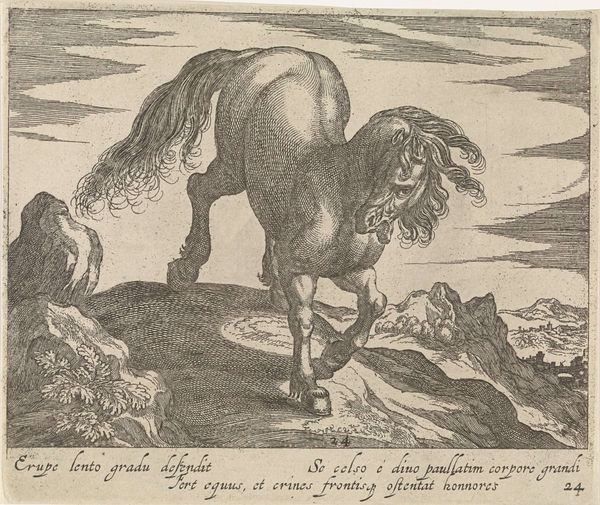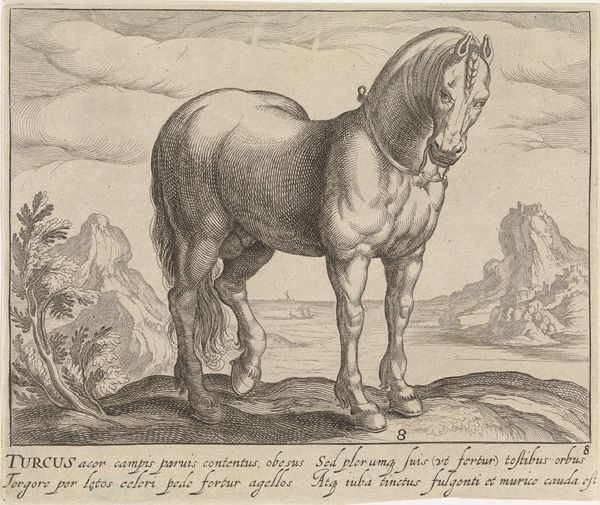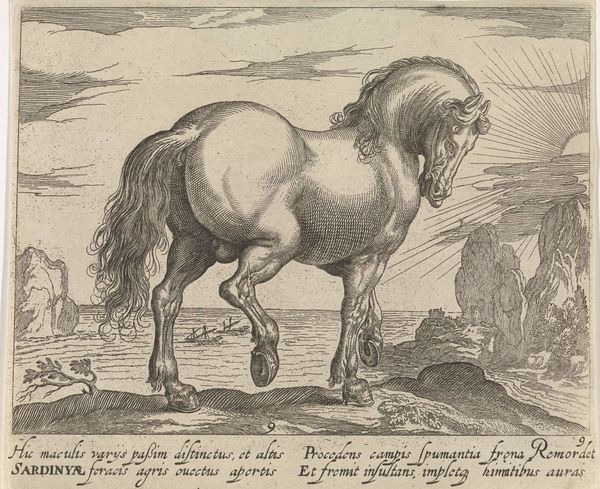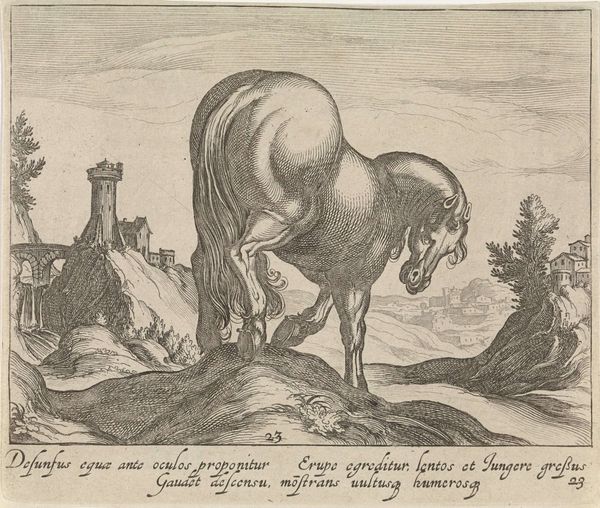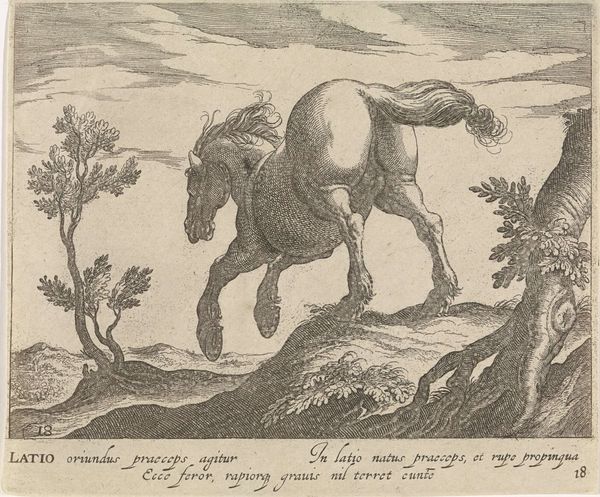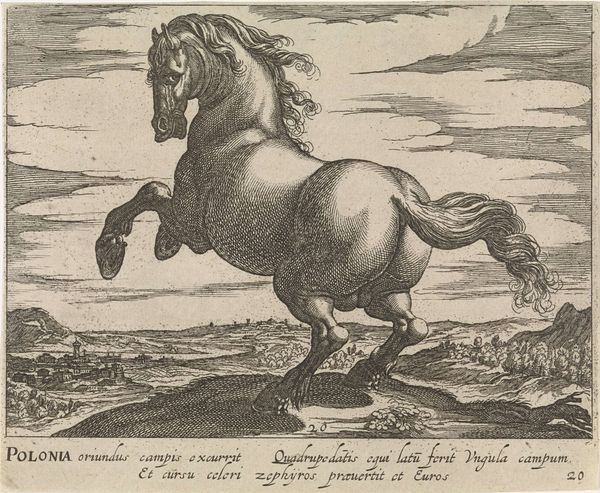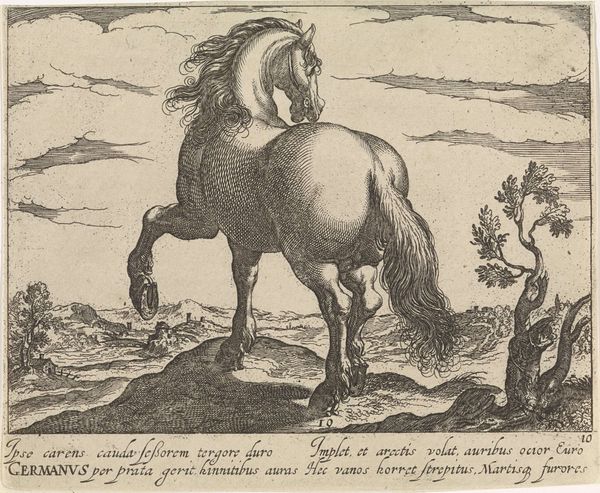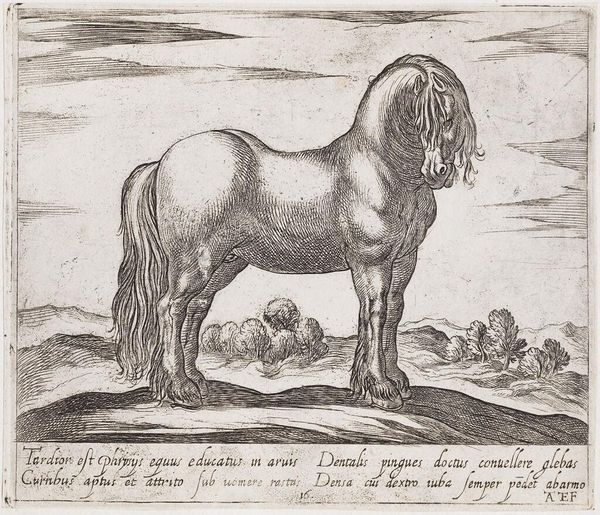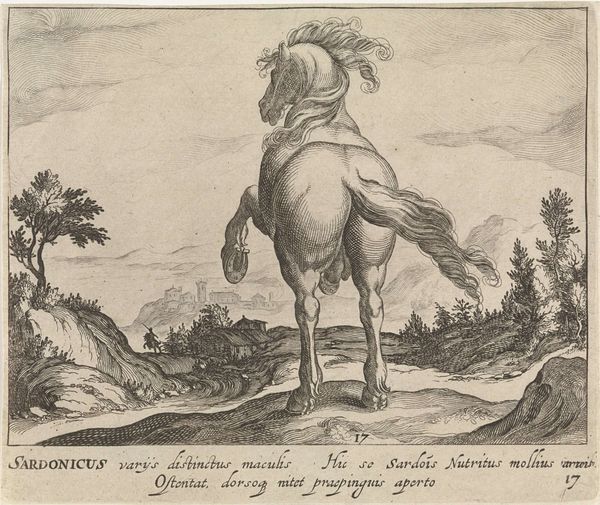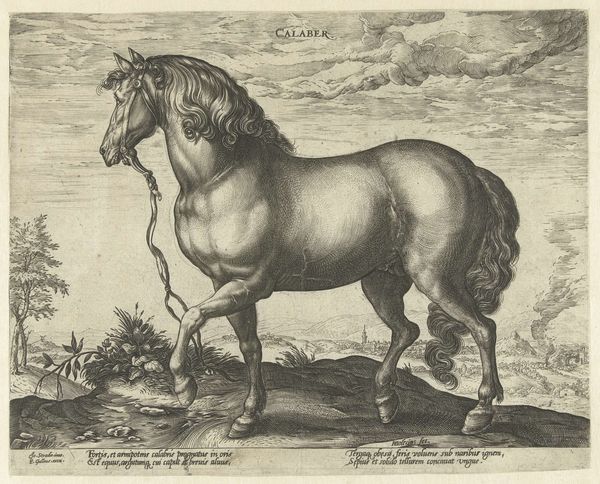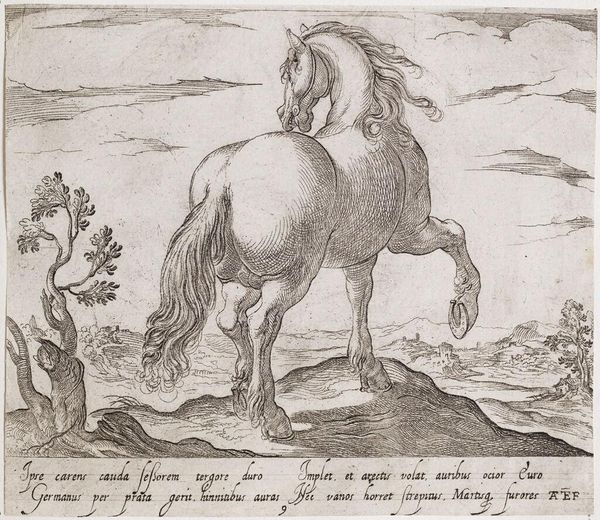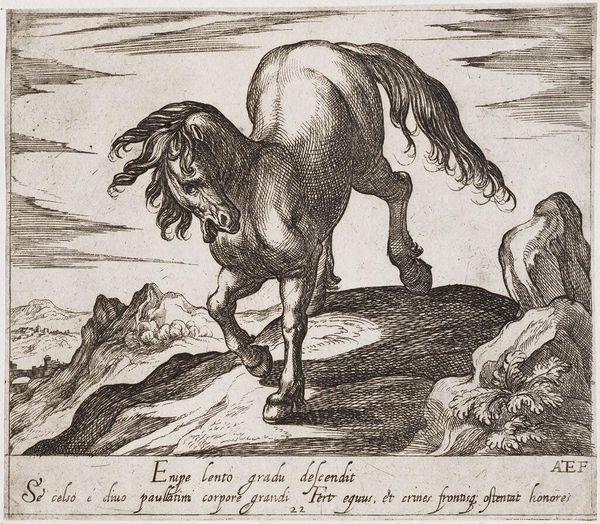
print, engraving
# print
#
landscape
#
figuration
#
engraving
Dimensions: height 135 mm, width 163 mm
Copyright: Rijks Museum: Open Domain
Curator: Allow me to introduce you to "Landscape with Horse from England," an engraving attributed to Egbert van Panderen, dating from around 1590 to 1637. It resides here in the Rijksmuseum. Editor: First thing that hits me, it feels like a slightly melancholy giant is looming over a miniature, crumbling kingdom. Like Gulliver’s travels in horse form. Is he sad? Reflective? Or just gassy? Curator: The artist positions the horse prominently, almost monumentally, dominating the delicate landscape backdrop, this was a trend that served to both highlight the glory of nature, as well as suggest dominance over it. Editor: Right, I get the “dominance” thing, but is he really dominating? He seems more introspective, nose almost to the ground. It’s more like he’s pondering the impermanence of that crumbling civilization in the distance. And that tiny figure 7 in the corner...a bit absurd. Curator: Numbers were occasionally incorporated in the engravings of this period for practical cataloguing, such as to specify the location of the print. What strikes me is the intricate detail rendered entirely through engraving, almost obsessively detailing musculature while suggesting vast landscapes with just a few lines. Editor: I appreciate that attention to detail – you can almost feel the weight of his tail, each strand individually articulated. There's a slightly surreal quality to it, too; the clouds feel weightless while the horse looks almost too massive for the landscape. It creates this weird tension, doesn't it? Curator: A tension reflecting perhaps the complex relationship between man, animal and the environments of both. Think also about how these prints functioned – not just as standalone artworks, but as sources for larger paintings or even tapestries. Editor: Okay, yeah. A pattern for future landscapes, stitched across generations. But on its own, this lone horse looks both magnificent and kind of out of place – like he's wandered off the set of a biblical epic and doesn’t know quite what to do next. Curator: So from a piece of the practical history, the piece resonates differently now with our evolved perspectives, and your immediate response lets us examine the depth. Thanks for joining me. Editor: A pleasure! And I'm still pondering that sad horse and that rogue "7". Art is funny, isn’t it? It lets you wonder.
Comments
No comments
Be the first to comment and join the conversation on the ultimate creative platform.

